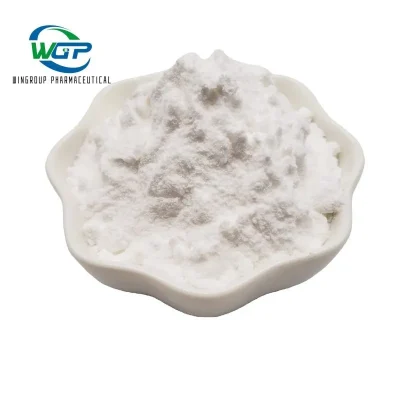Bupivacaine
CAS:2180-92-9
MF:C18H28N2O
Bupivacaineis a chiral compound used clinically for 50 years, with a slower onset, greater potency and longer duration of action than lidocaine. Initial benefits of bupivacaine were sensory–motor separation and minimal tachyphylaxis, unlike repeated doses of lido. However, it has greater potential for cardiac toxicity, related to its avid binding to and slow dissociation from cardiac N a+ channels.
- Description
- Our Policy
- Additional information
Description
Bupivacaine CAS 2180-92-9 Product Information
| Product Name: | Bupivacaine |
| Synonyms: | MARCAINE;Bupivacaine;BupivacaineBASE;2′,6′-Pipecoloxylidide, 1-butyl-;6’-pipecoloxylidide,1-butyl-2;Anekain;Carbostesin;DL-Bupivacaine |
| CAS NO: | 2180-92-9 |
| Molecular Weight: | 288.43 |
| Molecular Formula: | C18H28N2O |
| Boiling Point: | 430.65°C (rough estimate) |
| Melting point: | 107.5-108° |
| Density: | 1.0238 (rough estimate) |
| Appearance: | Yellow to khaki-green Crystalline Powder |
| Purity: | >98% |
| Solubility: | 13.8g/l soluble |
| Sensitive: | Air Sensitive |
bupivacaine vs lidocaine
Bupivacaine is a more potent drug than lidocaine, making it suitable for injections in deeper tissues, such as joints and muscles. Lidocaine, on the other hand, is better suited for superficial injections, such as those used for suturing wounds or numbing the skin for minor procedures. Age and health of the patient are also factors that may influence the choice of anesthetic.
bupivacaine side effects
Bupivacaine is an anesthetic (numbing medicine) that is used as a local (in only one area) anesthetic. Bupivacaine is given as an epidural injection into the spinal column to produce numbness during labor, surgery, or certain medical procedures. Some side effects of bupivacaine include lightheadedness, dizziness, tremors, headache, blurred vision, fast or slow heartbeats, breathing problems, chills or shivering, back pain, nausea and vomiting.
bupivacaine dose/bupivacaine max dose
The dose of bupivacaine depends on the age and health of the patient, the type of procedure being performed, and other factors. The dose is usually determined by a healthcare provider.
bupivacaine mechanism of action
Bupivacaine is an amide local anesthetic that provides local anesthesia through blockade of nerve impulse generation and conduction. These impulses, also known as action potentials, critically depend on membrane depolarization produced by the influx of sodium ions into the neuron through voltage-gated sodium channels. Bupivacaine binds to the intracellular portion of voltage-gated sodium channels and blocks sodium influx into nerve cells, which prevents depolarization. Without depolarization, no initiation or conduction of a pain signal can occur
bupivacaine liposome
Bupivacaine liposome is a local anesthetic that is used to numb an area of the body to help reduce pain or discomfort caused by certain medical procedures or conditions. It is used as a single-dose injection into the surgical site or as a continuous infusion through a catheter placed near the surgical site.
ropivacaine vs bupivacaine
Ropivacaine is less lipophilic than bupivacaine and is less likely to penetrate large, myelinated motor fibers, resulting in a relatively reduced motor blockade. Ropivacaine may be less cardiotoxic and produces less motor block than bupivacaine. A study found that patients who had ropivacaine had superior ambulation time and distance, quicker post-anesthesia care unit transition and a similar complication rate during total hip arthroplasty compared with bupivacaine.
levobupivacaine vs buupivacaine
Levobupivacaine and bupivacaine are both local anesthetics used for regional anesthesia. Levobupivacaine is the S-enantiomer of bupivacaine and is less cardiotoxic than bupivacaine.
| Transit time | You will normally receive your parcel within 7-15 working days after shipment (this may be delayed in special circumstances, such as Chinese New Year). |
| Receiving method | Generally we will send the goods by courier or special line, of course, if the goods themselves in the local warehouse have goods, also support self-pickup, depending on the circumstances. |
| Overseas warehouse | We have overseas warehouses in some European countries and Australia, such as Germany, Russia and Australia. |
| Delivery Method | WGP will ship via courier companies such as DHL, FedEx, UPS, TNT or EMS. |
| About After Sales | Within 7 days of your receipt of the goods if you find any problems with the goods (broken packaging, less hair, etc.) please feel free to contact our sales, we will help you deal with it in time. |
Additional information
| Weight | 1 kg |
|---|---|
| Dimensions | 20 × 20 × 40 cm |












Reviews
There are no reviews yet.